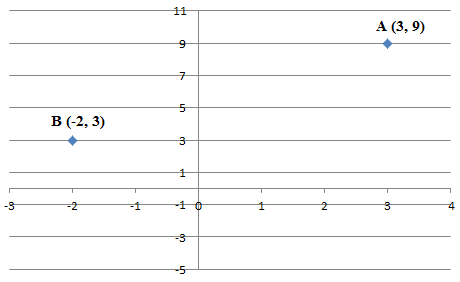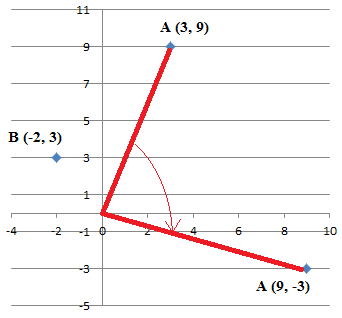Point A is at #(3 ,9 )# and point B is at #(-2 ,3 )#. Point A is rotated #pi/2 # clockwise about the origin. What are the new coordinates of point A and by how much has the distance between points A and B changed?
1 Answer
Explanation:
First let's consider where A and B are on the Cartesian plane:

At the beginning of the problem, we can determine the initial distance between A and B using the distance formula:
Note: This is just a variation of the Pythagorean theorem.
Plugging in the initial coordinates, the original distance between A and B is:
The problem states that A is rotated by
After a
Multiplying the original coordinates of A by the new coordinates of
Note: If this doesn't make sense, I highly recommend watching the following starting at 3:30 -
Let's visualize this rotation:

Next, calculate the new distance using the distance formula:
Overall, the change in distance would be:

